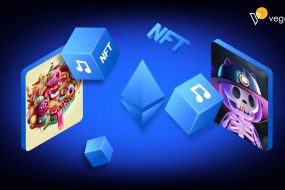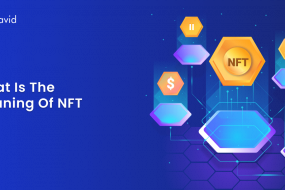
OpenSea is a popular online marketplace for non-fungible tokens (NFTs), which have exploded in popularity over the past couple of years as a new form of digital asset ownership. NFTs are unique digital assets that can represent anything from digital art to virtual real estate and are bought and sold using cryptocurrency. OpenSea has quickly become one of the go-to platforms for buying and selling NFTs, offering both creators and collectors a wide range of options.
Many people have one question about OpenSea: how the platform makes money? After all, they don’t charge any fees for listing items for sale, so where does their revenue come from? In this blog post, we’ll look closer at OpenSea’s revenue model and explore how they generate income in this exciting and rapidly evolving marketplace.
Understanding OpenSea’s revenue model is important for anyone considering buying or selling NFTs on the platform. By understanding how the platform makes money, you can make more informed decisions about your own transactions and be better prepared for any fees or costs that may arise. So whether you’re a seasoned NFT collector or a newcomer to this exciting space, read on to learn more about how OpenSea operates and generates revenue.
OpenSea Revenue in 2021
OpenSea is the world’s largest NFT marketplace, facilitating the buying and selling of a wide range of digital assets, including art, music, and gaming items. The platform has rapidly grown in popularity over the past year, with more and more users turning to NFTs to invest in and collect unique digital assets. But how exactly does OpenSea make money?
Explanation of OpenSea’s Revenue Sources
OpenSea generates revenue through a number of different sources. One of the main ways the platform makes money is through transaction fees. Whenever a user buys or sells an NFT on the platform, OpenSea takes a small percentage of the sale price as a fee. This fee can range from 2.5% to 10%, depending on the value of the transaction and the type of asset being traded. In addition to transaction fees, OpenSea also generates revenue through its own NFT collections. The platform has created several exclusive NFT collections that it sells directly to users. OpenSea takes a percentage of the sale price of these NFTs as revenue.
Analysis of OpenSea’s monthly revenue in 2021
OpenSea revenue in 2021 has been impressive, reflecting the growing demand for NFTs and the popularity of OpenSea’s platform. According to data from DappRadar, OpenSea’s monthly revenue in August 2021 was over $150 million, a significant increase from its revenue in January of the same year, which was around $8 million. This revenue growth can be attributed to several factors, including the increasing popularity of NFTs and the growing number of users on the OpenSea platform. In addition, OpenSea has been expanding its offerings, adding new features and tools that appeal to buyers and sellers. It’s worth noting that the NFT market is still relatively new and can be subject to volatility. OpenSea’s revenue growth in 2021 may not be sustainable over the long term, but it reflects current market trends and the potential for growth in the NFT space.
Comparison of OpenSea’s Revenue to Other NFT Marketplaces
Another popular NFT marketplace is Rarible. Like OpenSea, Rarible allows anyone to create and sell NFTs on the platform, generating revenue through transaction fees (2.5% to 15%). However, Rarible does not have exclusive NFT collections, so its revenue is likely lower than OpenSea’s.
Overall, OpenSea’s revenue has likely been quite significant in 2021. The platform has experienced explosive growth over the past year, with more and more users turning to NFTs to invest in and collect digital assets.
OpenSea’s Revenue Model
This blog section will explore how OpenSea makes money, including its revenue streams, revenue-sharing model, and fee structure.
Revenue Streams
OpenSea’s primary revenue stream comes from transaction fees. The platform charges a fee of 2.5% on all transactions on the marketplace. This fee is deducted from the seller’s proceeds at the sale.
OpenSea also generates revenue through partnerships and collaborations. The platform has partnered with several high-profile NFT creators, including Beeple and Trevor Jones, to launch exclusive collections. OpenSea earns a commission on each sale made from these collections.
Revenue-Sharing Model
OpenSea operates on a revenue-sharing model, meaning the platform shares a portion of its revenue with the developers and creators who build on top of it. This model incentivizes developers and creators to continue building on the platform.
OpenSea’s revenue-sharing model allocates a percentage of its revenue to a community treasury. Developers and creators can then submit proposals for funding from the treasury. The community votes on the proposals, and if approved, the funds are distributed to the proposal’s creator.
Fee Structure
OpenSea charges a 2.5% fee on all transactions on the platform. This fee is deducted from the seller’s proceeds at the sale. Additionally, OpenSea charges gas fees, which are fees paid to the Ethereum network to process transactions. Gas fees can vary depending on network congestion and the complexity of the transaction.
OpenSea’s fee structure is designed to be transparent and fair. The platform does not charge any listing fees, meaning anyone can list an NFT for sale on the platform for free.
OpenSea Revenue Stream
As the world’s largest NFT marketplace, OpenSea generates revenue through various revenue streams. In this article, we will explore some of OpenSea’s key revenue streams, including listing fees, transaction fees, seller fees, buyer fees, and premium services.
Listing Fees
One of OpenSea’s revenue streams is listing fees. Whenever a user lists an NFT for sale on the platform, they are required to pay a listing fee. This fee varies depending on the type of NFT being listed and the listing duration. Listing fees can range from a few cents to several dollars, depending on the value of the NFT.
Transaction Fees
Another major revenue stream for OpenSea is transaction fees. Whenever a buyer purchases an NFT on the platform, they are required to pay a transaction fee. This fee is a percentage of the sale price paid to OpenSea as a commission. Transaction fees are OpenSea’s primary revenue source and have contributed significantly to the company’s growth in recent years. In 2021, OpenSea had over $90 million in monthly revenues, with transaction fees accounting for most of this revenue. As the NFT market grows, transaction fees are expected to remain a key revenue driver for OpenSea and other NFT marketplaces.
Seller Fees
OpenSea also generates revenue through seller fees. When a seller successfully sells an NFT on the platform, they are required to pay a seller fee to OpenSea. This fee is a percentage of the sale price and is paid as a commission to OpenSea. The fee amount varies depending on the value of the NFT and the type of sale.
Buyer Fees
Buyer fees are another source of revenue for OpenSea. Whenever a buyer purchases an NFT on the platform, they are required to pay a buyer fee. This fee is a percentage of the sale price paid to OpenSea as a commission. The fee amount varies depending on the value of the NFT and the type of sale.
Premium Services
Finally, OpenSea generates revenue through premium services. These are optional services that users can pay for to enhance their experience on the platform. Premium services can include improved visibility for listings, access to exclusive content or collections, and other features. Users can pay for these services on a one-time or recurring basis, generating additional revenue for OpenSea.
OpenSea’s Future Revenue Streams
As the platform continues to grow and expand, it’s worth exploring potential revenue streams for the company and its partnerships and collaborations. Additionally, we can predict OpenSea’s revenue growth in 2022 and beyond.
Discussion of potential revenue streams for OpenSea
OpenSea’s current revenue model is based on transaction fees charged to buyers and sellers on the platform. However, there are several other potential revenue streams that OpenSea could explore. One possibility is offering premium services to users, such as analytics and data insights, to help buyers and sellers make more informed decisions. OpenSea could also offer advertising or sponsorship opportunities to brands looking to reach the platform’s user base.
Another potential revenue stream is to offer white-label solutions to other companies or platforms that want to create their own NFT marketplaces. OpenSea has already partnered with companies such as Efinity and Polygon to create NFT marketplaces on their respective blockchains, so it’s clear that there is demand for this type of service.
Exploration of OpenSea’s partnerships and collaborations
OpenSea has already formed partnerships with various companies and organizations, including the NBA, the Electronic Frontier Foundation, and others. These partnerships help increase awareness and adoption of NFTs and bring in additional revenue through collaborations and co-branded merchandise.
In addition to partnerships, OpenSea has collaborated with various artists and creators to offer exclusive NFT collections on the platform. These collaborations not only help bring in revenue but also bring new users to the platform interested in purchasing unique and limited-edition NFTs.
Predictions for OpenSea’s revenue growth in 2022 and beyond
With the continued growth and mainstream adoption of NFTs, OpenSea’s revenue will likely continue to grow in the coming years. In 2021, OpenSea saw a massive increase in transaction volume, with over $10 billion in sales on the platform. While it’s impossible to predict exact revenue numbers, it’s safe to say that OpenSea will continue to see significant revenue growth as more users enter the NFT market.
Additionally, OpenSea’s recent funding round, which raised $300 million, will provide the company with the resources it needs to continue expanding its platform and exploring new revenue streams. With its focus on user experience and community building, OpenSea is well-positioned to continue dominating the NFT marketplace and generating significant revenue in the years to come.
Conclusion
OpenSea is a popular NFT marketplace that offers a range of features and services for buyers and sellers of NFTs. The company generates revenue primarily through transaction fees and secondary sources such as gas fees, integrations, and other partnerships. OpenSea has experienced rapid growth recently, reporting significant monthly revenue and transaction volume increases. As the NFT market evolves, OpenSea must continue innovating and adapting to stay ahead of the competition. However, with its strong user base, innovative features, and commitment to supporting the growth and adoption of NFTs, OpenSea is well-positioned to continue leading the way in the exciting world of NFTs.











